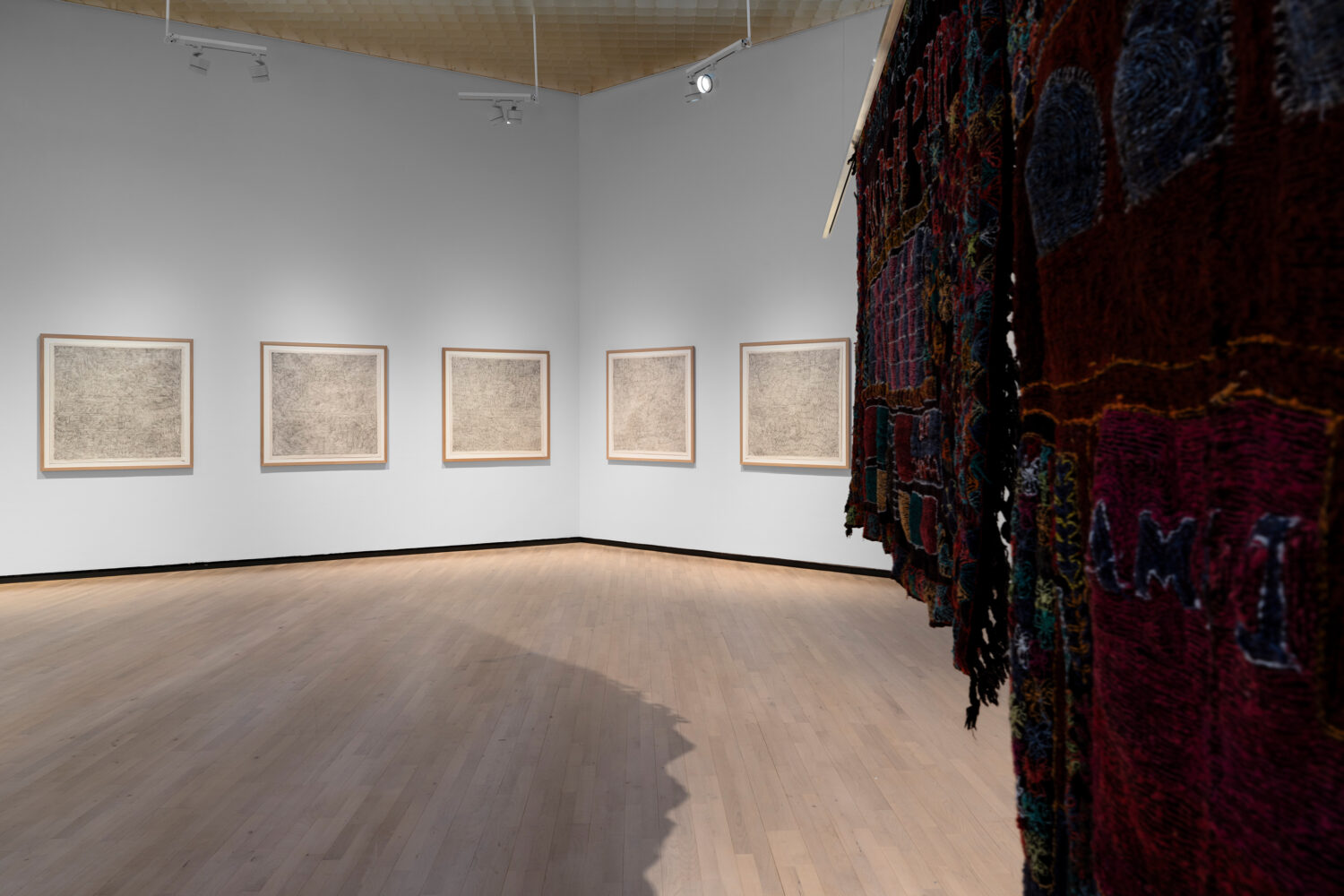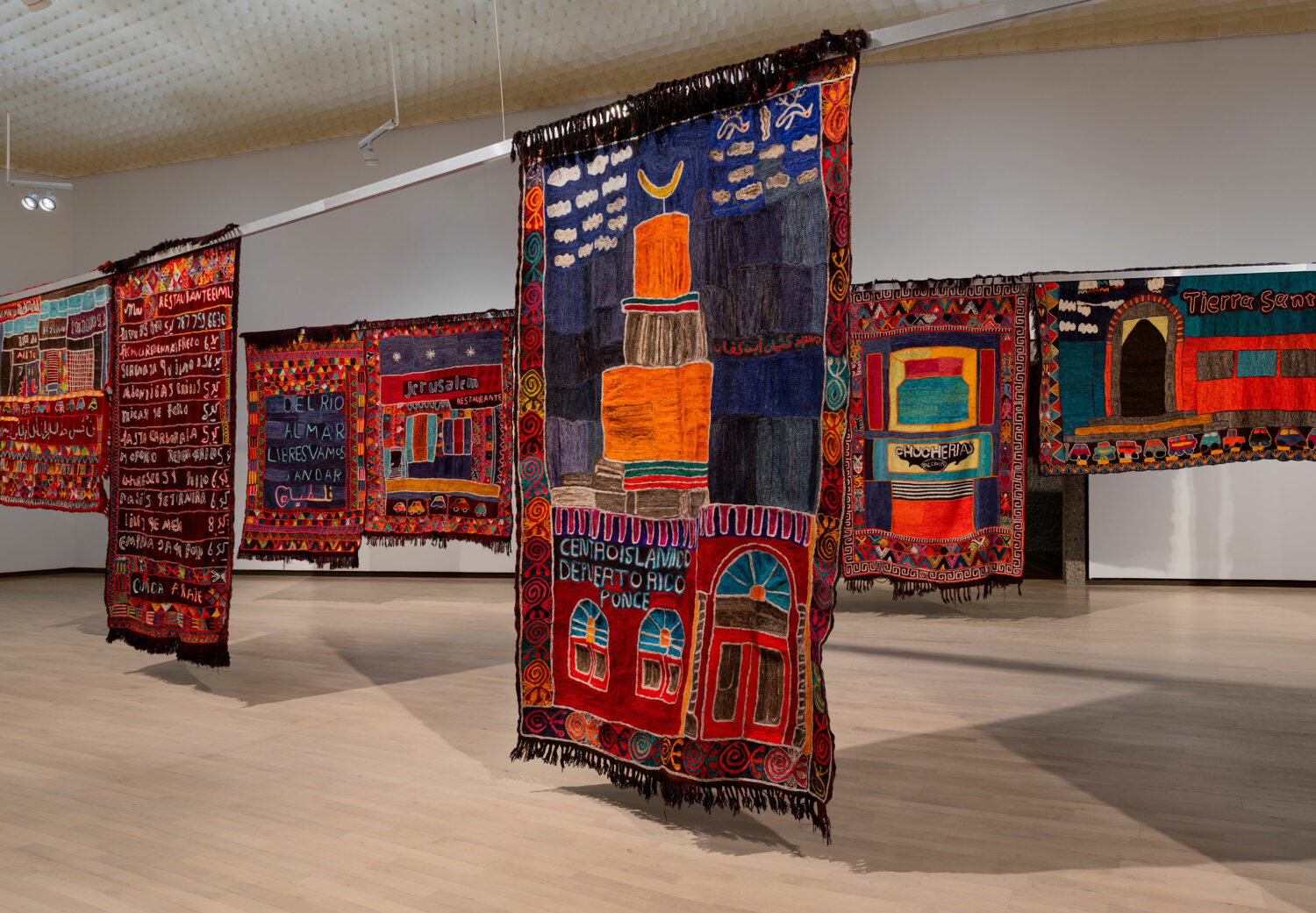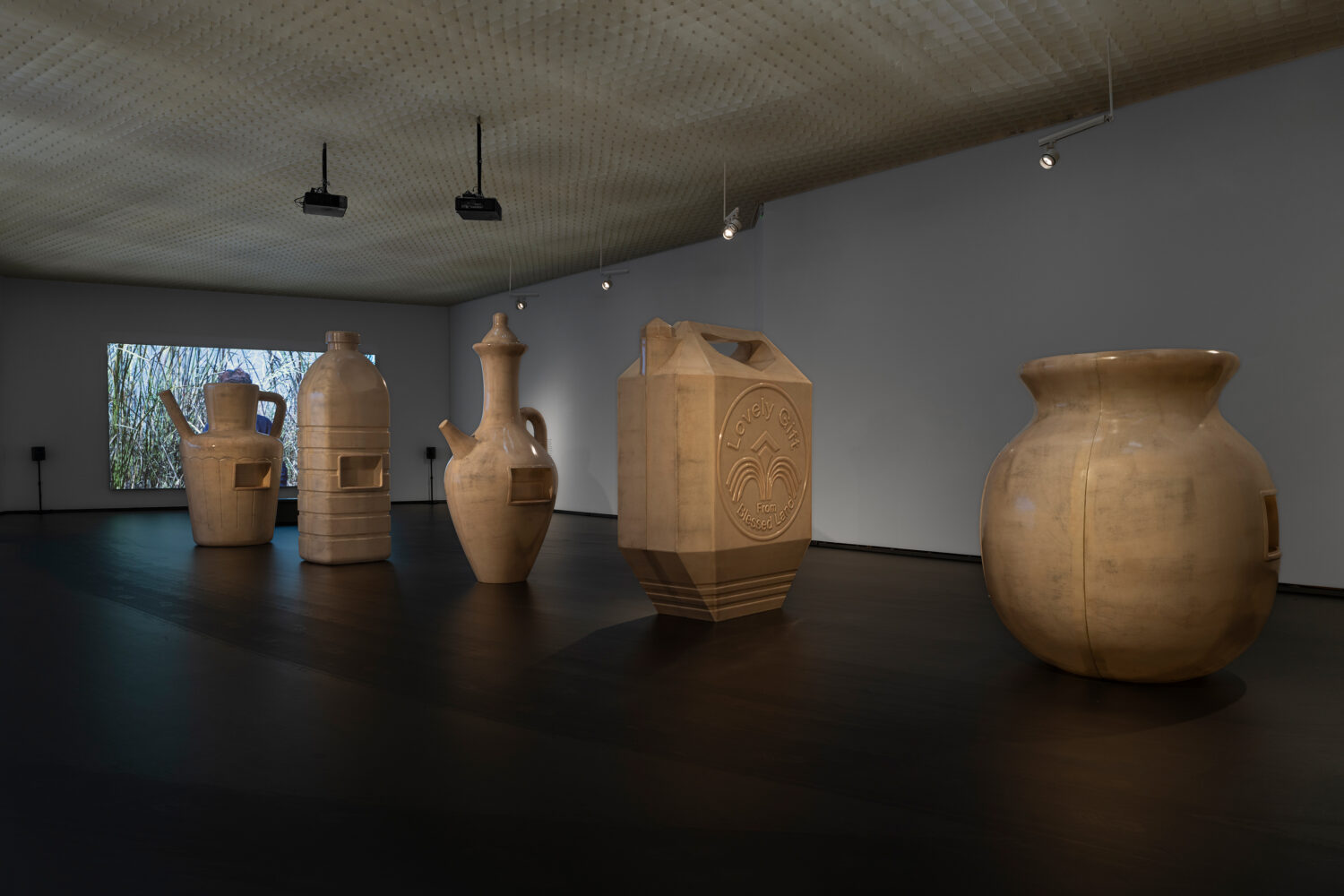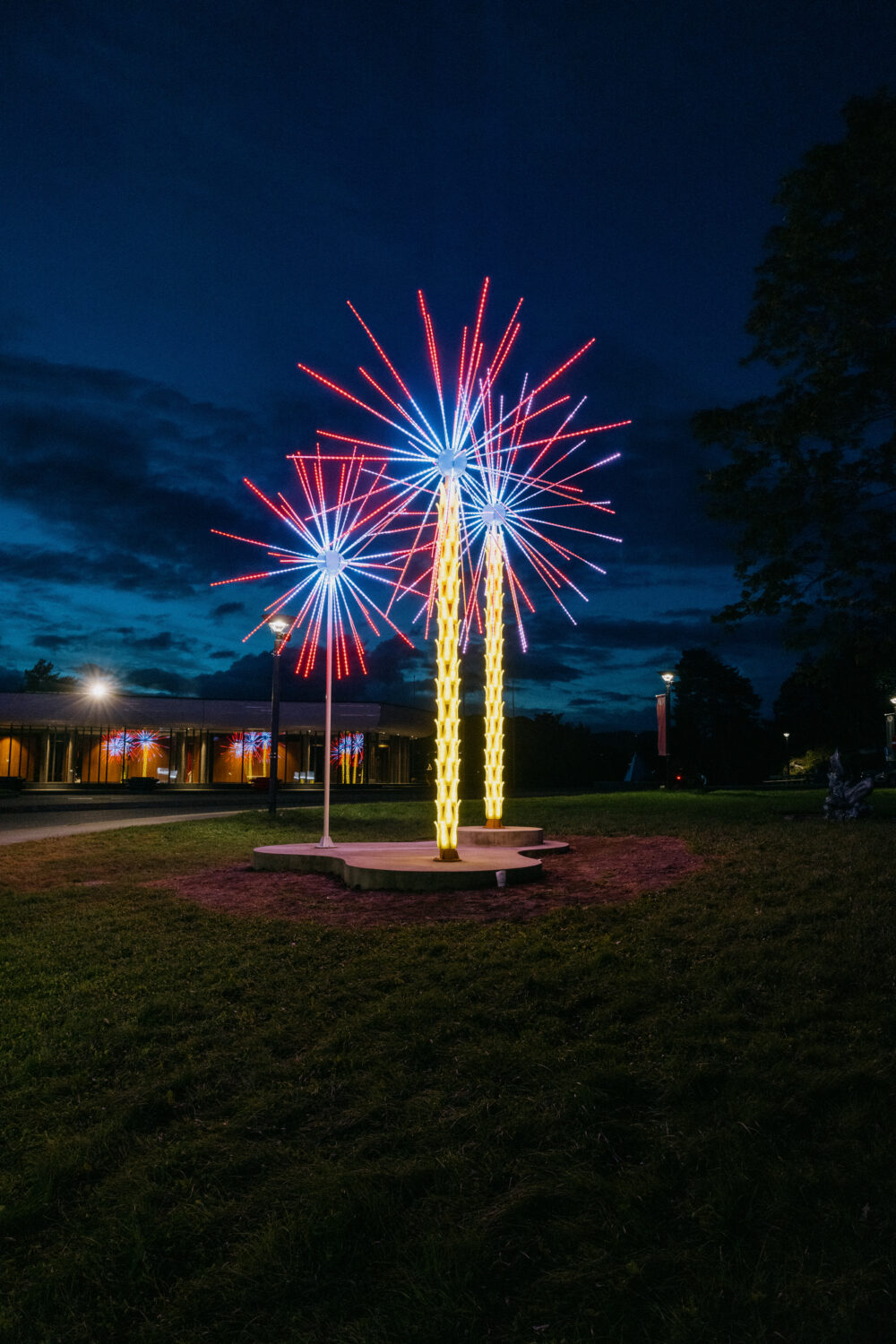Histories of Solidarity and Plastic Palm Trees: In Conversation with Artist Alia Farid
By Keshav AnandOpen now at Henie Onstad Kunstsenter in Oslo, and on view until 5 January 2025, Bneid Al Gar is the largest solo exhibition to date of the Kuwaiti-Puerto Rican artist, Alia Farid. Last year, Farid received the Lise Wilhelmsen Art Award, which alongside significant financial support offers awardees a solo exhibition at the Norwegian arts institution, Henie Onstad. Bneid Al Gar features four key works from Farid’s career, along with new drawings — rubbings of intricately crafted Iraqi textiles on palm tree paper. The show’s title, Bneid Al Gar — Arabic for “land of tar” — reflects the artist’s memories of growing up in an area of Kuwait where the earth was once saturated with oil.

With a practice that oscillates between art, architecture and anthropology, Farid works across diverse mediums, revealing narratives and knowledge systems often overlooked by the West. Expanding on the materiality of her work, she tells Something Curated: “I think different materials do different things. I really like 3D. I like being called a sculptor because I enjoy working with form. I like 2D a lot too but the fascination with materials in sculpture seeps in. Like with the palm tree paper I work on. I would find it hard to just pick up a pad of paper from an art store and make a drawing. I would feel like, “What is this material?” The palm tree paper is made by an older artist who makes work with paper, and I bought the paper from him to make the drawings. I think I really get into something when I am in conversation with the material.”
The new presentation in Oslo comprises a selection of handwoven and embroidered textiles from the artist’s Elsewhere (2023) series, through which she examines the aesthetics, symbols, and rituals born from migration within the Global South. Moving through the gallery space in which the pieces are hung, it feels a bit like navigating a bustling street. The tapestries incorporate imagery inspired by photographs, archival documents, and conversations with Palestinian diaspora members in Puerto Rico. Created in collaboration with weavers from southern Iraq, these richly populated textile works explore fresh interpretations, shapes, and expressions of collective resilience and solidarity.

The artist explains: “When thinking about my own background, my parents’ story is a love story. My mom came to Kuwait because she met my father while studying architecture. But noticing and thinking about the diasporas in the Caribbean, like when they speak about cultural identity in the Caribbean, people mainly talk about the indigenous people or the Taíno aspect of the culture, and then Spanish colonialism, and the transatlantic slave trade — there are so many other identities that comprise the region and are a part of the Caribbean culture. There’s the Chinese migration to Cuba for example.
I realised, while doing this project, there are so many different kinds of migration that aren’t represented. No one’s really discussing these identities. The Palestinian migration to Chile is another example — these are histories of solidarity. I’ve been thinking about resisting this pull of developed countries, or the productive countries, and how ideologically people choose to migrate to different places for different reasons. Maybe it’s forced but maybe they resist a migration northwards because that’s precisely where the violence is coming from.”

Expanding on the colours featured in the tapestries, Farid continues: “A huge inspiration for this work was how conservation teams look at things like textiles in their collections — they’re studying them to see what materials go into them, and I think that’s interesting for me because of what those materials say about the moment and place they were made in. Whereas historically they [the Iraqi weavers] used plant dyes, today that’s been replaced by synthetic dyes because the land no longer produces any plants. You know, after forty years of war it’s a depleted landscape. And so initially I was like, “Oh, this colour palette — I don’t know if I like it.” But I realised it’s not the point whether I like the colours or not, it’s what that conveys about the place. And so I leaned into it.”
Displayed alongside the textile works at Henie Onstad are five sculptures from the In Lieu of What Is (2022) series. In these sculptures, Farid examines the material, political, and cultural impact of the oil industry’s extractive methods. Drawing inspiration from public drinking fountains in the Arabian Gulf, the large-scale pieces explore connections to natural water sources and the lasting effects of desalination plants. Presented in close proximity to her films Chibayish (2022, 2023) — recorded in the marshlands of southern Iraq, at the confluence of the Tigris and Euphrates rivers — these works collectively endeavour to shed light on the deliberate targeting of ecosystems in warfare and the associated loss of generational knowledge.

The sculptures from In Lieu of What Is, made using moulds, display visible casting lines nodding to their process of production. Farid elaborates: “I think, like the frottages, the mould making process is a way of studying what’s happening in the world. With frottages it’s a way of studying the lexicon of traditional craft and then with making moulds it’s practicing something that is very much a part of the moment we are currently living in — mass production. It refers to what’s happening with the modernisation of the material, of plastics. Most of it is used for mass production.”
Stepping outside after the opening reception, the sun has now fully set and homeward bound guests are confronted by Farid’s glimmering Palm Orchard (2022). First shown at the Whitney Biennial, the piece consists of artificial palm trees rendered in plastic and LED lights. For the artist, the palm tree holds personal meaning, as her paternal grandmother came from Basra, a city once celebrated for its flourishing date palms and rich greenery. The palm groves of Basra were largely destroyed during the Iran-Iraq War (1980–88) in an effort to strip enemies and dissidents of natural cover. Farid has referred to her artificial palm trees as “low-grade stand-ins for the palm groves that once covered large areas of the south.”
Feature image: Alia Farid, Elsewhere, 2023. Installation view. Photo: Christian Tunge. Courtesy Henie Onstad Kunstsenter